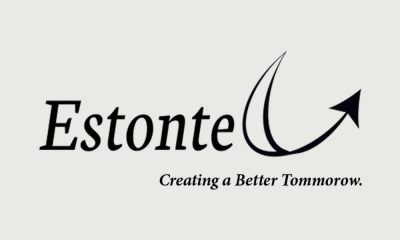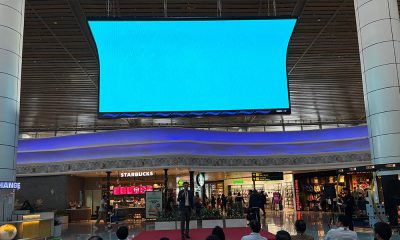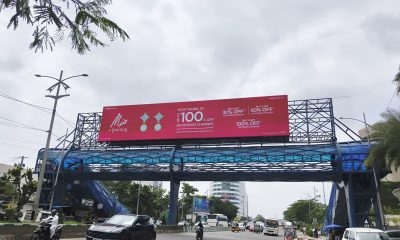OOH Adtech
“It’s all about how you marry the information available to you”
Sailesh Muthu, CEO of AdMAVIN, explains how their platform uses geo-spatial data to help advertisers compare OOH sites based on location, audience, and cost efficiency. AdMAVIN provides actionable insights by filtering and analysing this data, helping brands optimise their OOH campaigns.

The Out-of-Home (OOH) advertising industry is evolving, but it’s still highly fragmented, especially in terms of technology and data usage. AdMAVIN, led by CEO Sailesh Muthu, aims to address these challenges by bridging the gap between buyers and sellers, offering a platform that empowers businesses to make data-driven decisions for their OOH campaigns. In a recent interview, Sailesh shared insights into how AdMAVIN uses geo-spatial data and why understanding the geography and infrastructure of a location is crucial for success.
Bridging the gap between buyers and sellers
Sailesh explained that the original idea behind AdMAVIN was to create a transparent platform for comparing OOH sites. He likened this to how consumers compare products on eCommerce websites. “I can point out that these are the sites available, but how do I know which one is better?” Sailesh asked, emphasising the need for a comparison-based approach in the OOH space.
While most agencies have their own repository of data, AdMAVIN differentiates itself by allowing advertisers to measure the value of a site based on multiple factors, such as location, audience relevance, and spending efficiency. “First, it’s about the surroundings of that location. What is the value unit? Then, how much money can you spend on it? And if you’re ready to spend a certain amount, are you getting what you want?” Sailesh said, stressing the importance of balancing cost with campaign effectiveness.
The power of geo-spatial data
Geo-spatial data is at the heart of AdMAVIN’s platform, enabling advertisers to better understand the geography of their chosen sites. This understanding goes beyond just looking at traffic numbers; it involves analysing infrastructure, road networks, and even the type of vehicles passing by. “Infrastructure and road networks are the biggest factors for a site’s success,” Sailesh highlighted. He also pointed out that cleaning and filtering data is essential, as traffic numbers can fluctuate. “You can’t put a number and say it’s accurate and it’s the consistent amount of people who visit there,” Sailesh noted, explaining that AdMAVIN uses averages over a period of time to offer more reliable insights.
Understanding audience behaviour and footfall
One of the unique features of AdMAVIN’s platform is its ability to break down audience patterns. Sailesh explained that footfall patterns in different areas can vary significantly, and not all visitors are potential customers. “If there’s a consistent footfall to a certain place from a certain crowd, then that person is not a customer. A customer doesn’t go somewhere every day to buy something. The less frequent a visitor, the more chances are of him being a buyer,” he stated.
This insight is especially important for OOH campaigns, as advertisers need to target locations that attract relevant and infrequent visitors rather than consistent passersby who may not convert into customers. Sailesh also pointed out the value of certain high-traffic locations, such as bus stops, which he believes are underpriced for specific audience profiles. “Biggest number of footfalls you’ll get from bus stops. Putting ads on bus stops is relatively cheap. But if the Brand relevance is high for bus travellers, then they should be charging more because of the relevance of the footfall they create,” he said, suggesting that OOH pricing doesn’t always align with its true potential.
The cost of real-time data
Although real-time data can provide valuable insights for OOH campaigns, Sailesh admitted that it’s currently too expensive for AdMAVIN to implement given the willingness of the market to spend on Metrics, Data and Technology . “We don’t do anything real-time as of now because it is very costly. There is a cost constraint as of now,” he explained. However, Sailesh emphasised that the strength of AdMAVIN’s platform lies in its ability to provide defendable, reliable reports. “The report has to be strong, and it has to be defendable in front of an audience. You can’t just put up any numbers and not be able to defend them,” he added.
Addressing digital OOH and slot timing
When discussing the impact of short time slots in Digital OOH (DOOH) advertising, Sailesh highlighted how AdMAVIN helps brands understand the flow of traffic and determine which time slots are most beneficial. “This is where we come in. When you understand the traffic, you understand how traffic moves and which slot will be most beneficial for you,” he explained.
Sailesh’s insights also challenge the notion that the size or format of an OOH site is a major factor. “Media Size and format create differentiation in terms of visibility alone; what creates recall value is the Creative and what helps measurability of impact is the understanding of how traffic flow (pedestrian or vehicular) works,” he said. This further illustrates AdMAVIN’s focus on data-driven decisions rather than relying on traditional assumptions about OOH advertising.
AdMAVIN is transforming how brands approach OOH advertising by leveraging geo-spatial data, analysing infrastructure and traffic patterns, and providing transparent, defendable insights. With a focus on audience behaviour and location relevance, the platform helps advertisers maximise their investment and achieve better results in a traditionally unorganised industry.
Sailesh’s vision for AdMAVIN goes beyond simply offering data; it’s about making OOH campaigns smarter and more efficient. “It’s all about how you marry the information available to you,” he said, underscoring the importance of a holistic, data-driven approach to OOH advertising.
-

 Ad Policies & Regulations
Ad Policies & RegulationsHaryana tightens outdoor advertising framework with bye-law amendments
-

 Creative Concepts
Creative ConceptsHocco’s OOH activation at Sunburn Festival
-

 Campaigns
CampaignsFastrack Smart Watches strengthens Southern presence with DOOH campaign
-

 Campaigns
CampaignsTimes OOH brings festive cheer to Mauritius airport




















